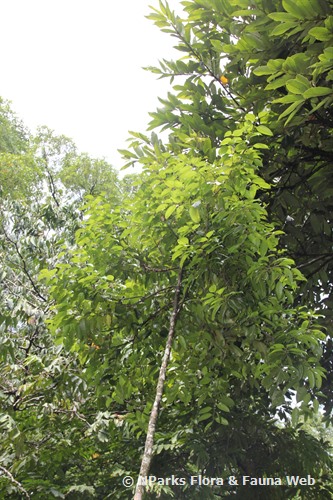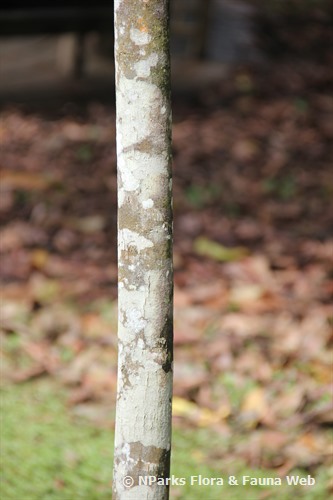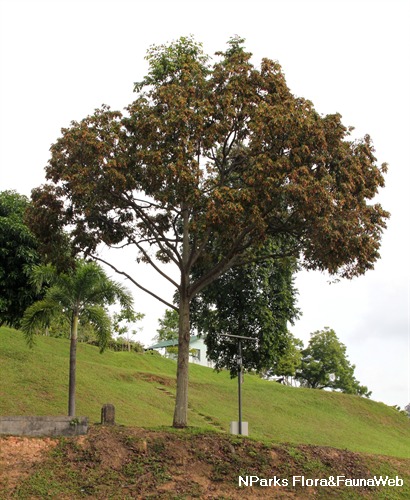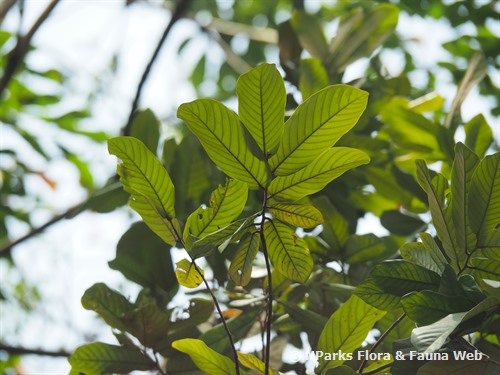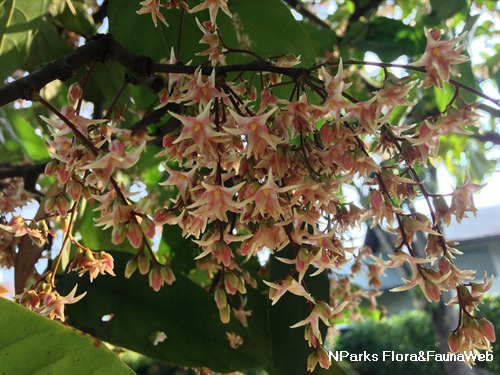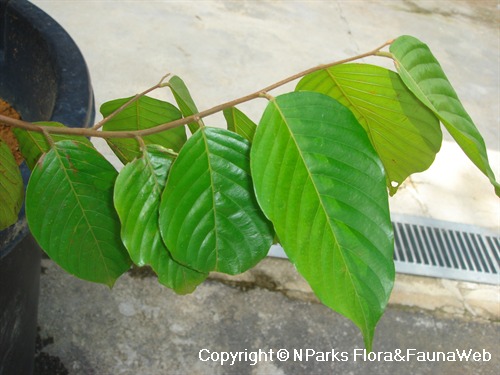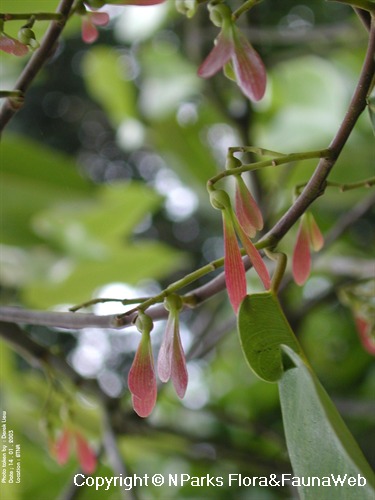
Back
Hopea mengarawan Miq.
| Family Name: | Dipterocarpaceae |
| Common Name: | Merawan Penak, Emang, Emang Jangkar, Luis, Selangan |
Name
Classifications and Characteristics
| Plant Division | Angiosperms (Flowering Seed Plants) (Dicotyledon) |
|---|---|
| Plant Growth Form | Tree (Big (>30m)) |
| Lifespan (in Singapore) | Perennial |
| Mode of Nutrition | Autotrophic |
| Plant Shape | Irregular |
| Maximum Height | 45 m |
Biogeography
| Native Distribution | Sumatra, Peninsular Malaysia, Singapore, Sumatra, and Borneo |
|---|---|
| Native Habitat | Terrestrial (Primary Rainforest, Mountain, Secondary Rainforest) |
| Preferred Climate Zone | Tropical |
| Local Conservation Status | Native to Singapore (Endangered (EN)) |
Description and Ethnobotany
| Growth Form | It is a tree up to 45 m tall. |
|---|---|
| Foliage | Its alternate, stalked leaves have leathery leaf blades that are oblong-lance-shaped, 6-12 by 2.5-5 cm, and brownish below and golden-brown above when dry. |
| Flowers | Each flowering shoot is up to 3 cm long and bears up to 6 white-yellowish flowers that are about 5 mm wide. |
| Fruit | Its green-red fruits consist of a narrowly ovoid nut that is 1 by 0.5 cm, with 2 longer wings that are about 7 by 1.2 cm, and 3 shorter wings that are about 0.6 by 0.5 cm. |
| Habitat | It grows on poor sandy to clayey soils in forests, on ridges and hillsides up to 500 m altitude. It occurs locally in Bukit Timah Nature Reserve. |
| Associated Fauna | Its flowers are insect-pollinated. |
| Cultivation | It can be propagated by seed. |
| Etymology | Latin Hopea, commemorating John Hope (1725-1768), the first Regius Keeper of the Royal Botanic Garden, Edinburgh; Malay mengarawan, the vernacular name for this species |
Landscaping Features
| Landscaping | It can be grown in parks and large gardens. |
|---|---|
| Desirable Plant Features | Ornamental Fruits, Ornamental Form |
| Landscape Uses | General, Parks & Gardens |
Fauna, Pollination and Dispersal
| Pollination Method(s) | Biotic (Fauna) |
|---|---|
| Seed or Spore Dispersal | Abiotic |
Plant Care and Propagation
| Light Preference | Full Sun |
|---|---|
| Water Preference | Moderate Water |
| Plant Growth Rate | Moderate |
| Rootzone Tolerance | Moist Soils, Well-Drained Soils, Fertile Loamy Soils |
| Maintenance Requirements | Moderate |
| Propagation Method | Seed |
Foliar
| Foliage Retention | Evergreen |
|---|---|
| Mature Foliage Colour(s) | Green |
| Mature Foliage Texture(s) | Leathery |
| Foliar Modification | Stipule |
| Foliar Type | Simple / Unifoliate |
| Foliar Arrangement Along Stem | Alternate |
| Foliar Attachment to Stem | Petiolate |
| Foliar Shape(s) | Non-Palm Foliage (Lanceolate, Oblong) |
| Foliar Venation | Pinnate / Net |
| Foliar Margin | Entire |
| Leaf Area Index (LAI) for Green Plot Ratio | 3.0 (Tree - Intermediate Canopy) |
Floral (Angiosperm)
| Flower & Plant Sexuality | Bisexual Flowers |
| Flower Colour(s) | Cream / Off-White |
|---|---|
| Flower Grouping | Cluster / Inflorescence |
| Flower Symmetry | Radial |
Fruit, Seed and Spore
| Mature Fruit Colour(s) | Brown, Green, Red |
|---|---|
| Fruit Classification | Simple Fruit |
| Fruit Type | Indehiscent Dry Fruit , Nut / Nutlet |
Image Repository
Others
| Master ID | 1664 |
|---|---|
| Species ID | 2957 |
| Flora Disclaimer | The information in this website has been compiled from reliable sources, such as reference works on medicinal plants. It is not a substitute for medical advice or treatment and NParks does not purport to provide any medical advice. Readers should always consult his/her physician before using or consuming a plant for medicinal purposes. |

